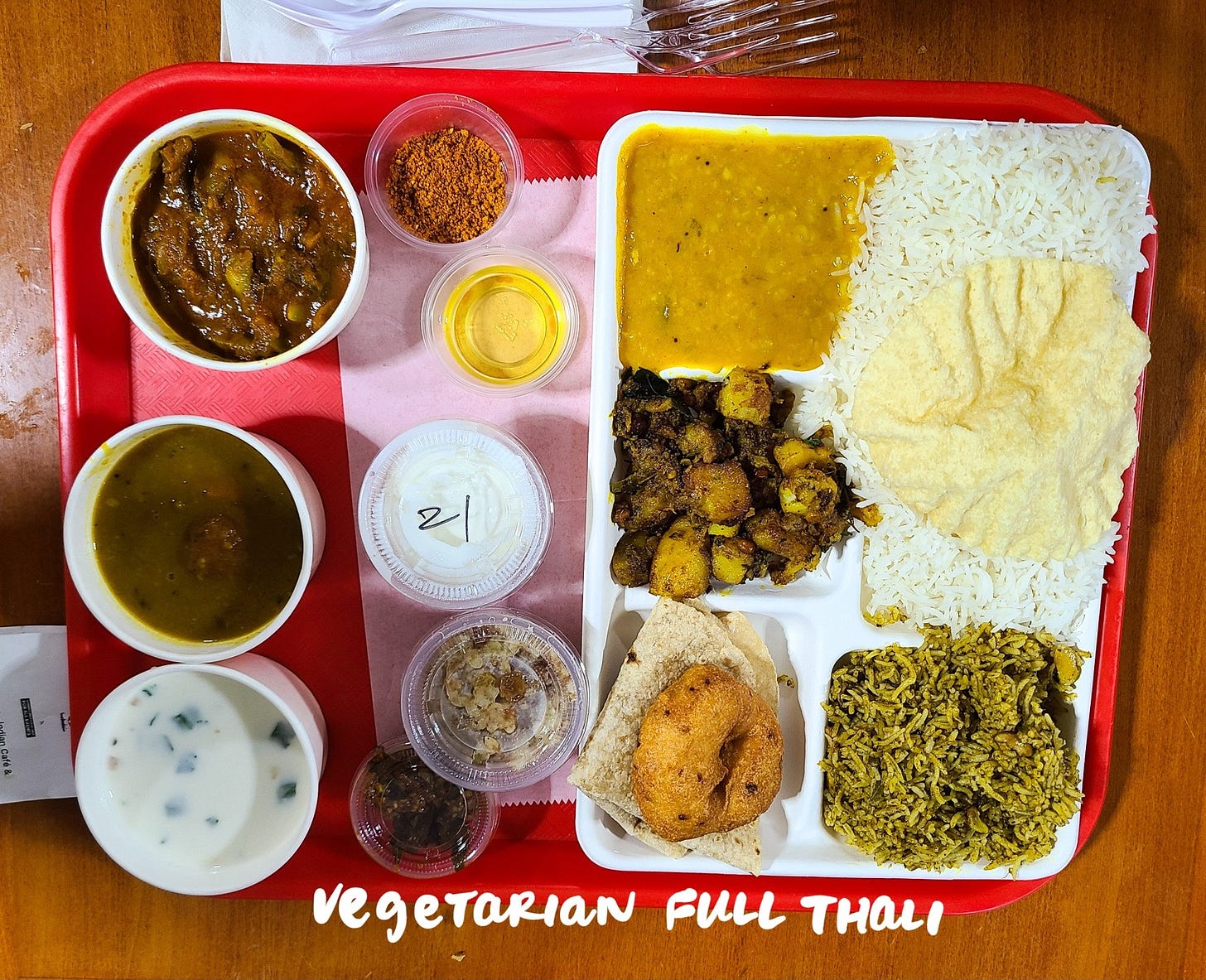menu notes: Indian Cuisine
a resource for when you need a buddy but all you got is the internet
The first of the cathzine menu notes will be on Indian cuisine! This uses the information from Sukhis.com’s Indian Food 101 Guide as a foundation, and is supplemented by other resources that will be linked/credited where appropriate.
**courtesy of Sukhis.com, I learned that Indian dishes are usually named after their main components, the cooking method used, or where they come from. All that to say, this mini glossary should help with giving you some clarity when trying to navigate the menu!
mini glossary
amritsari: dishes in the style of the city of Amritsar from Punjab state; dishes in this style will trend a bit more creamy
barfi: (dessert) fudge-like dessert where condensed milk is mixed with ghee and sugar till a thick sweet batter is formed and set to cool
bhoona/bhuna: refers to the cooking method used in preparing the dish, involving frying spices & meat/veggies over high heat to develop a caramelized flavor; dry-roasted/sautéed
biryani: Indian rice dish prepared with several layers of rice, a spiced meat/paneer/vegetables, with added richness from ghee/yogurt, then slow cooked
chaat: all-inclusive word for Indian street food
chutney: condiment; can be made using fruit, herbs, nuts, etc. blended with a liquid (i.e., water, milk, yogurt, etc.)
curry: gravy; there is no flavor associated with it—often misused interchangeably with “curry powder”; below are a couple of different types:
korma: nutty, creamy curry made with crushed cashews or almonds; with a yogurt-based sauce flavored with ginger & garlic
makhani: using butter/cream—this is the dish we Americans know as “butter chicken”!
tikka masala: when small chunks of {insert protein} are cooked in a sauce with a particular spice blend (here—masala)
vindaloo: marrying of Portuguese and Indian flavors—fiery, flavorful, made with the protein marinated in wine vinegar and garlic
dal: lentil soups; typically pressure-cooked with water then mixed with onions, tomatoes, and spices
dosa: South Indian crepe made from fermented rice & lentil batter
falooda: (also spelled “faluda”) an ice cream dessert made with vermicelli (either using corn starch or wheat flour), jelly (made with gelatin or agar agar), rose syrup, Tukmaria/sabja seeds (sweet basil seeds), milk, and ice cream
gulab jamun: (dessert) deep fried dough balls that absorb syrup and are soft & juicy
halwa: (dessert) pudding made with any variety of flour that’s cooked with sugar, ghee, water/milk
kadai: is a round, deep cooking pot that is similar to a Chinese wok but with a tighter diameter and steeper, taller sides, and two looped handles for easy transportation. It is thick with a heavy rounded bottom, and is traditionally made from cast iron, but stainless steel, copper, brass, aluminum and enamel versions also have become popular, as are flat-bottomed versions that are more sturdy on North American-style stoves.
👉 dishes using a kadai in their preparation share common elements, such as using oil or ghee as a base, incorporating onion, garlic, ginger, then slow cooking with tomatoes and chilies to create a gravy-like sauce
kolhapuri: dishes in the style of the city of Kolhapur in the Maharashtra state; dishes in this style will trend more spicy
masala: any mixture of spices
palak: spinach
papadum: a crispy cracker usually made of rice or lentils
paneer: Indian cheese, the only cheese used in Indian cooking
saag: leafy green vegetables, like spinach, collard greens, mustard greens, etc.
sambar: vegetable stew made with lentils
tandoori: the term means “clay oven,” and precedes anything that comes out of the clay oven (i.e., “tandoori chicken”)
thali: when ordered, looks like a sampler plate. The word refers to the plate the sampler is served on as well the Indian custom of eating all of a region’s courses at once for the purposes of mixing and matching flavors to your exact preference (rather than having a single dish individually) to cover the entire palate.

A thali can include:
a grain: such as rice or flatbread
a lentil: such as dal or sambar
seasonal vegetables
a condiment: chutney or pickles, raita
a curry
a dessert/sweet thing
a fried thing: such as papadum
vijayawada: a cooking style that originates from the city Vijayawada, from the Indian state of Andhra Pradesh. This descriptor precedes biryani dishes the most often, but my first encounter with it was in the form of a paneer veggie appetizer from Triveni. It’s known for a mildly hot flavor profile that uses ginger, garlic, and various spices in a sauce thickened with corn/rice flour to coat your main ingredient of choice. This is then fried till crispy, and topped with fried peanuts/cashews and green chilies.
example: this Vijayawada style paneer from Triveni





This is so cute!! ❤️❤️